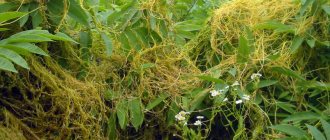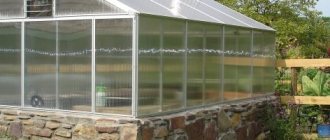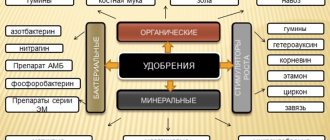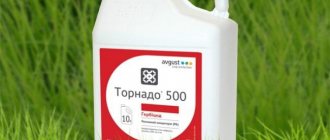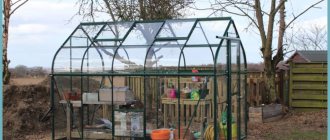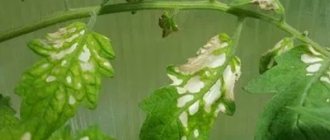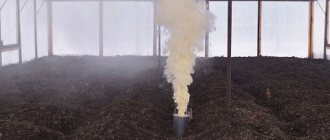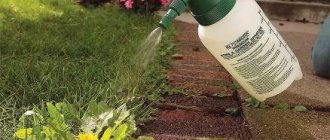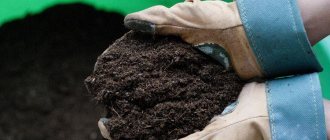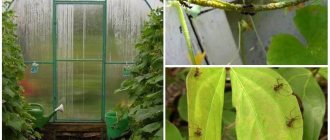At the mention of late blight, many gardeners and gardeners look sadly towards their plantings, followed by a heavy sigh. Do not despair! Let's give a worthy rebuff to the insidious disease that is already “taking an eye” on your potatoes and tomatoes.
Our reader from Nizhny Novgorod shared her personal experience of successfully combating late blight.
The opinion of the author of the material may not coincide with the position of the editors.
Anastasia Ermakova has been growing tomatoes for a long time and is convinced that it is possible to effectively fight late blight. Moreover, it is not necessary to use strong chemicals for this.
A little background. In the first year of gardening in a new place, I simply did not know about the high background of soil contamination with late blight. Therefore, of course, I was not ready and used only Fitosporin, which was familiar to me at that time. The result, naturally, was deplorable - my tomato bushes “burned out” already at the end of July. As it turned out, this picture was common in our village. After crying over my tomatoes, I decided not to put up with it, like my neighbors did.
The winter was fruitful - tons of sources were studied. By spring, a prevention and control plan was ready. I met the second season fully prepared, and it was quite successful. My tomatoes still got sick, of course, but I was able to “stretch” them in the greenhouse until October and they looked pretty decent. The harvest was also pleasing, and not a single tomato went to the landfill. Over the next couple of years, my plan underwent a slight correction, and now I am no longer afraid that one day, when I come to the greenhouse, I will see black tomato bushes.
I want to share my plan to combat late blight, I think it can be useful to many of us. The article is devoted to methods of processing soil and greenhouses, as well as methods and frequency of processing tomatoes.
Soil disinfection
In the first year, I shed the soil twice: in the fall, after cleaning the greenhouse (with copper sulfate, out of fear) and in the spring, 2-3 weeks before planting the seedlings. Then only in the spring. For disinfection I now use only peracetic acid. I make it myself, it’s very simple - to 1 liter of 9% table vinegar I add 200 ml of 3% hydrogen peroxide, and put the mixture in a warm, dark place for 7-10 days. I use it in the proportion of 1 glass per bucket of water. Six liters of acid is enough for me to spill 6 beds in two greenhouses. In monetary terms, the product costs approximately 200-250 rubles (5 liters of vinegar + 1 liter of hydrogen peroxide).
Why did I choose this particular method of soil disinfection? Peracetic acid is an organic acid that does not accumulate in the soil and, under the influence of the environment, decomposes into acetic acid, water and oxygen within two weeks. I use it in a fairly weak concentration, so the product does not acidify the soil. However, despite all this, peracetic acid is a very powerful disinfectant; it is effective against a huge number of microorganisms. At the same time, it acts much softer than copper sulfate. It can be used in the range from 0 to 40°C. For me, this is the most optimal means for shedding soil.
After disinfection, I cover the beds with a transparent film, as a result of which a greenhouse effect is created, since the sun's rays hit the ground without obstacles, while the moisture does not evaporate and the ground warms up much faster
A week after disinfection, I repopulate the soil with Trichoderma. By the way, I do this throughout the season approximately once every 3-4 weeks.
Regarding Trichoderma. I grow it myself, so I am confident in the quality and know that it really works. Today there are many drugs on the market based on this fungus, but, as it turned out in practice, not all of them are of high quality (for example, I could not grow the fungus from the drug Glyokladin brand “Oktyabrina Aprelevna”).
How to detect the disease
Determining whether plants are infected with late blight is quite simple. This disease mainly affects nightshade crops, so you should look for signs of its manifestation when examining tomatoes, eggplants, peppers, potatoes and physalis planted in a greenhouse. However, strawberries can also be attacked by the pest. Late blight begins with the appearance of dark gray-brown spots on the leaves of plants. When air humidity is high, a fluffy white coating forms on the back of the leaf blades. Then dark spots appear on the stems.
Scheme of the development cycle of late blight
The affected leaves dry out, the flower stalks also dry out and the inflorescences turn black. The fruits of diseased plants are covered with brownish-brown spots that are hard to the touch, which grow over the surface and in depth, and then soften and begin to rot. On the tubers of late blight-infected potatoes, grayish areas with wrinkled skin appear, under which, when cut, “tongues” of reddish tissue affected by the pathogen can be seen extending deeper. It is not for nothing that late blight is also known as brown rot or potato rot. Tubers and ripening green fruits affected by it, which are normal at first glance, become inedible even after harvesting, and diseased plants often die. In the middle of the 19th century, an outbreak of this disease affected almost the entire potato crop in Ireland, causing famine and mass immigration in the country.
Greenhouse treatment
I will not focus on cleaning the greenhouse - this is a well-known truth. I simply wash my greenhouses with water twice (in autumn and spring), fortunately I have a mini-wash for this.
Disinfection
In the spring, I disinfect the greenhouse using a sprayer - I generously and thoroughly spray all the parts of the greenhouse. I searched and chose how to do this for a very long time! I wanted to disinfect it well and not harm either the greenhouse parts or the soil.
In one of the sources I came across advice to use the product to disinfect premises in medical institutions. I started studying. Liquids like Alaminol were no longer needed due to their aggressiveness towards the environment. As it turned out, all such products contain chlorine in one form or another, which didn’t really suit me, but I didn’t really have a choice. I settled on the veterinary drug Glutex. Apart from the chlorine content, everything suited me: the concentration is very low (5 ml per 1 liter of water), does not harm people and animals, does not need to be washed off, is active against bacteria, viruses and fungi.
- How to treat a greenhouse in the fall against diseases and pests
You will learn how to prepare a greenhouse in the fall for the new season and at the same time save your energy and time!
I used it to treat greenhouses for three springs, until I saw a video on one of the channels about using chlorine-free bleach for this purpose. After that I breathed a sigh of relief, because... chlorine, even in small quantities, really bothered me.
Last spring I used Bos chlorine-free bleach. You need to dilute it according to the instructions for washing, as a rule, it is 50 g (2.5 tbsp) per bucket of water. Why this particular method? These bleaches are made from perborates. Once in the soil, the product is actively decomposed by soil bacteria without harming them and, as a bonus, enriches the soil with boron. The only limitation: the air temperature must be at least 5°C. Well, the polycarbonate will need to be washed, because... divorces remain. This is a great and inexpensive way!
Perborates are not very aggressive oxidizing agents that perfectly disinfect all treated surfaces, but do not damage the metal and plastic structures of the greenhouse.
Stage #3 – fight against dust and dirt
The “guarantee of health” in this case for the grown seedlings and plants is established in the tried and tested old-fashioned way - by banal washing.
You need to get rid of dust deposits and dirt:
- the frame, which must be carefully treated with a soapy solution, and then collected from it with a damp cloth what was applied. If pests bothered you last season, you need to add a remedy specifically for the detected pathogen or insect pest to the rinsing water;
- polycarbonate plates on both sides. They are washed only with a soft cloth or sponge with soapy water. The soap solution applied externally is washed off without any particular concerns with a stream from a hose or simply with copious amounts of water. It’s better not to play around with the hose inside. Soap is not a desirable component of fertile soil. It will not be difficult to wash off the solution from vertical surfaces. The inner surface of an arched or gable roof should be wiped with a damp cloth several times.
A soap solution containing approximately 3% alkali will have virtually no effect on the composition of the soil mixture. A solution with a high alkali content is extremely undesirable for soil.
Mulching
This is one of the main conditions for a successful struggle. I mulch the beds to block the path of spores from the ground to the leaves. Of course, late blight spores will inevitably fly to you from your neighbors, but there will be much fewer of them than there are in your land. It is only important that the earth first warms up completely.
I used mown grass, covering material, and sawdust as mulching materials. Now I've settled on sawdust. We have loam, and sawdust after digging makes the soil looser.
Fungicide help
A similar no less effective method is perfect for treating a polycarbonate greenhouse against late blight, but you need to choose a chemical product, then this liquid will also saturate the substrate.
The presence of dangerous components in the composition requires compliance with safety rules, which can be found by carefully reading the instructions for use. It is worth highlighting several of the most common names of fungicides:
- Virocide.
- Oksikhom.
- Abiga-pik.
Spraying is carried out in the morning or evening, but you need to create a suitable temperature in the room; experts believe that the optimal indicators will be 10-25 degrees.
Treatments
If you have a very high pathogenic background on your site, like mine, then for the first year or two you will not be able to do without chemical fungicides; If there is no such disgrace, then you can try to do without them, just have them in stock just in case. I only used contact fungicides – Profit Gold and Hom. Regarding systemic drugs like Skor: they have a waiting period of at least 3 weeks, which does not suit me, because... My tomatoes ripen on the bushes and need to be picked periodically. Well, in general, there are big questions about the timing of the complete removal of these drugs from plant tissues.
How I did it
The first year, remembering that signs of late blight last season appeared in mid-June (!), I began treating my tomatoes with chemical fungicides from the beginning of June at intervals of once every 10-14 days. At the same time, I did not forget to populate the soil with Trichoderma.
In the second year, from the beginning of June I carried out the first treatments with Trichoderma, but at the end of July, I still had to switch to “chemistry”. I won’t be able to tell you exactly when you will have to do this (or whether you will have to do this at all); rely on the condition of the plants. If you see that Trichoderma can no longer contain and suppress late blight, and the affected areas are increasing, then it’s time. At the same time, do not forget to populate the soil with Trichoderma.
In the third year I managed only with trichoderma. I treated it with Hom 2 times in September, but I was just playing it safe; I could have done without it, I think. And again, don’t forget about the ground!
Now in my area, late blight behaves almost unnoticed, trichoderma has done its job and continues to do it - the earth is recovering. I didn’t use chemical fungicides last season, although I have a couple of Khoma bags in stock (just in case), due to the nervous shock of the first season.
Late blight, like any other disease, is easier to prevent than to treat. If the disease has already affected the soil on your site, then do not despair. Adopt the methods described in our article, and the result will not be long in coming.
Stage #1 – freeing the area from fixtures
Everything that could be subject to thorough processing will need to be removed from the room. Portable trellises, inventory buckets, racks, vessels for transplanting seedlings. If wooden supports or analogs offered by most manufacturers of industrial greenhouses or polycarbonate were installed to support the roof in case of heavy snowfall, they should be dismantled.
With racks, trellises, racks, and supports removed from the greenhouse, we proceed as follows:
- Wooden support structures should be carefully inspected. Identified rotten and fungus-affected parts must be mercilessly replaced. After repair, wood fixtures should be whitewashed with settled slaked lime with the addition of paint glue.
- Metal structures need to be studied with equal care. Detected pockets of rust must be treated with a rust remover. In the absence of a factory-made product, we remove rust with half a potato. It contains enough oxalic acid to cope with minor rust crust. Baking soda or a mixture of vinegar and lemon juice will work. But the result of the latter option will be visible only a couple of hours after application. Have you removed the rust? Primer was applied and paint was applied.
After removing the various fixtures, it's time to examine the condition of the metal supports to which the polycarbonate sheets are attached. Corroded areas are also treated and painted. It is clear that undamaged devices do not need to be repaired or restored.
While there are no plants in the greenhouse, an inspection of the stove and plumbing equipment, if any, should be carried out. The potbelly stove is taken outside, where its condition is thoroughly examined. If the first bend of the chimney burns out, install a metal sheet bent into a cylinder inside. It can be changed again before the next season without any problems. Happy owners of polycarbonate buildings with a heating system need to repaint the pipes with aluminum paint diluted with a solvent or acetone. Drying oils should be added to the coloring composition to optimize adhesion. Heating equipment should not be painted with oils: this will impair heat transfer.
What is late blight of tomatoes?
This is a disease caused by the harmful fungus Phytophthora infestans. Plants are infected by fungal spores through the pores of the integumentary epidermis of leaves, where they enter with drops of water. The disease spreads quickly inside the vegetative organs of plants, and it is very difficult to fight it at this stage.
The spores of the fungus are incredibly mobile, mobile, and are carried over long distances with the help of the wind. The spores of the pathogen are very resistant to difficult conditions and overwinter in plant debris, garbage, on tools and structural elements of greenhouses, as well as in the soil.
Prevention of late blight in tomatoes
- We remove the leftovers.
Due to the fact that plant debris is a favorite place for spores of the late blight fungus, it is necessary to immediately destroy both plants affected by the disease and potential carriers of the spores.
Such residues should be burned or buried at the edge of the site, where no one will open them, but under no circumstances should they be used when laying compost heaps.
- We disinfect.
Immediately after harvesting plant residues, tubers and fruits, the soil is treated with one of the fungicidal preparations and dug up so that the spores remaining on the surface are not spread to neighboring areas.
- Let's get healthy.
Effective methods for improving the quality of soil and preventing the development of the disease are:
- the use of rye and other green manure crops, which are sown in the affected area and the green mass is plowed into the soil;
- avoidance of excess nitrogen and lime fertilizers;
- maintaining sufficient levels of potassium and phosphorus.
Timely implementation of preventive, agrotechnical measures, removal of plants with signs of disease and disinfection of the soil will not only ensure a good harvest, but also improve its quality characteristics, and minimize the use of chemicals in the fight against late blight.
